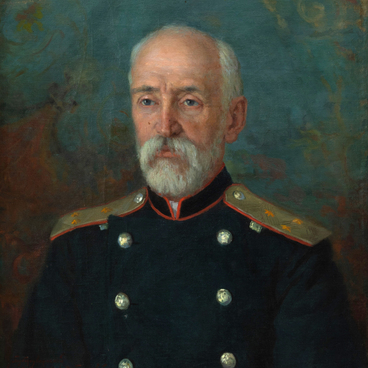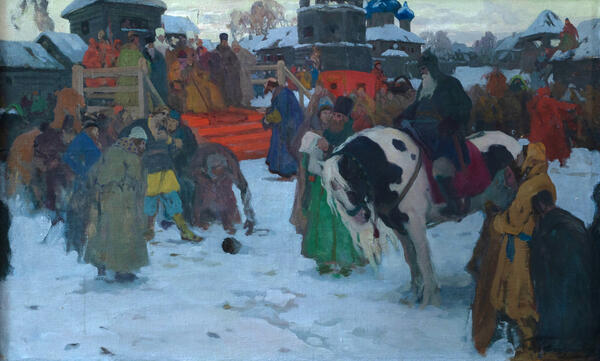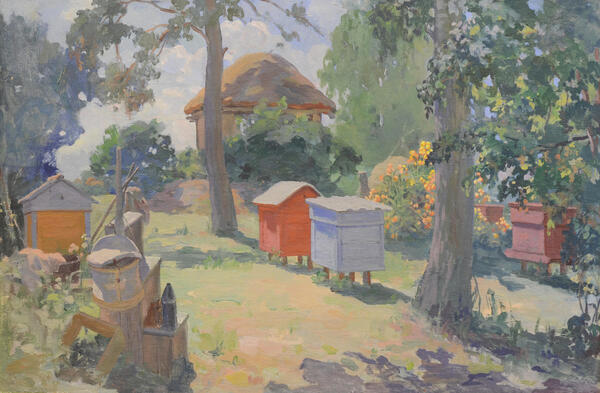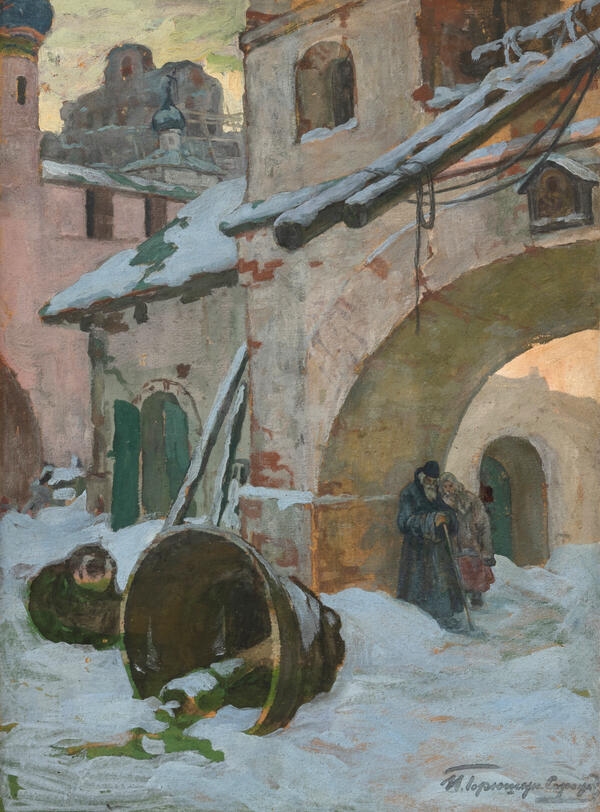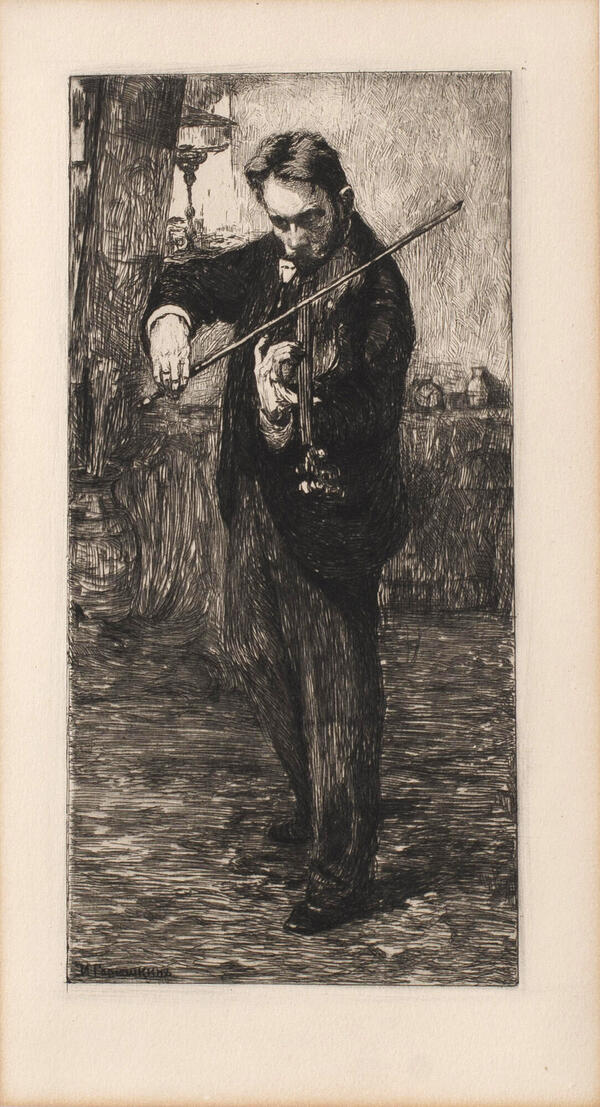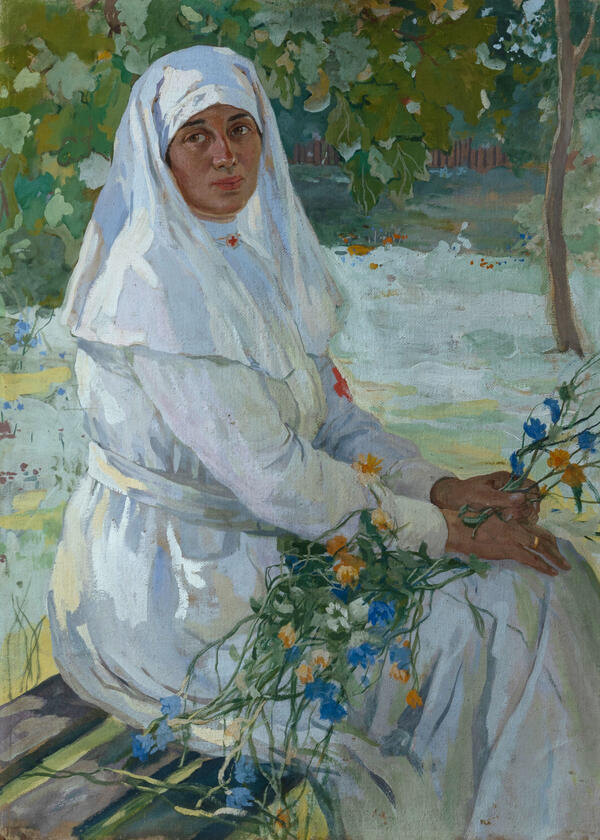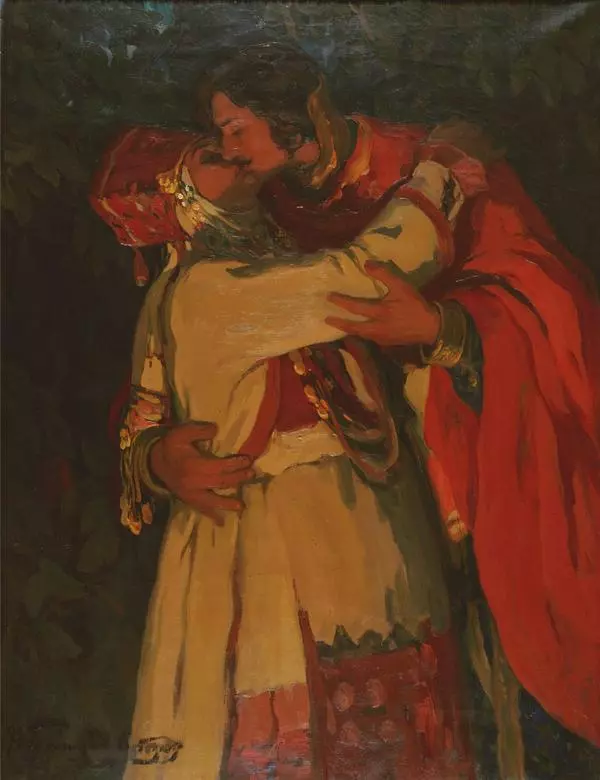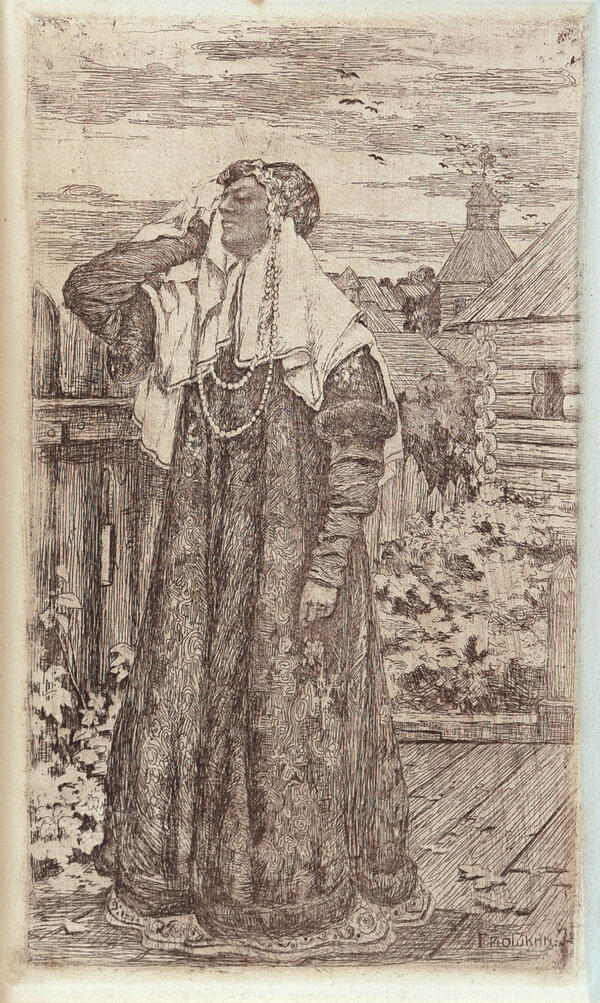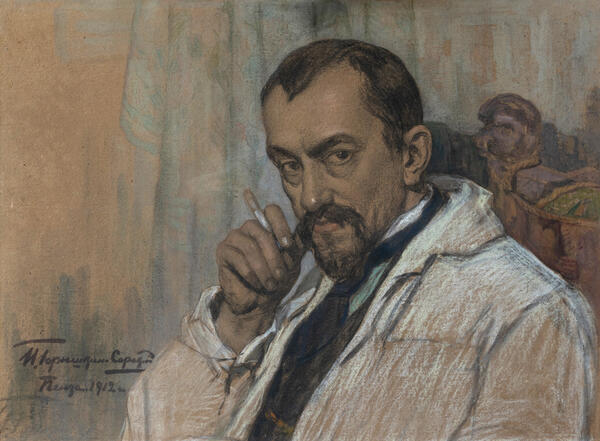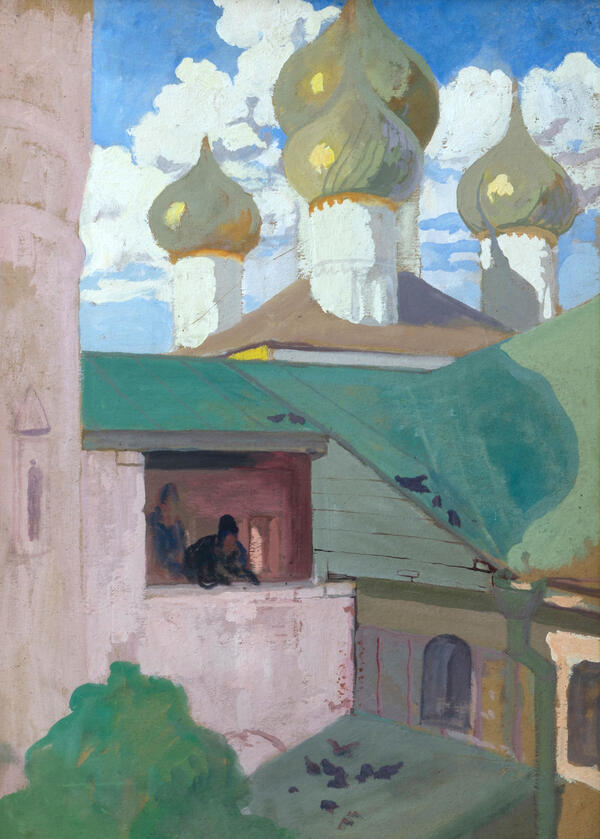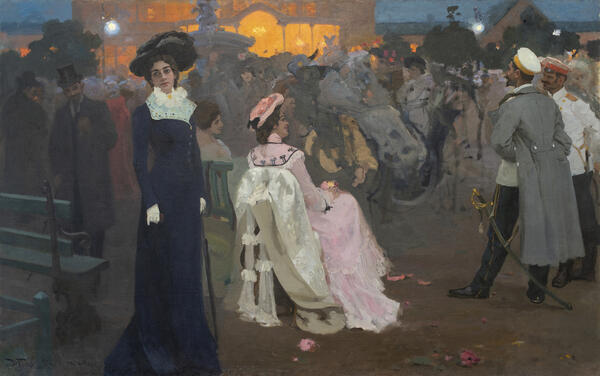Ivan Silych Goryushkin-Sorokopudov rarely worked on commission. He preferred to create images of people he knew well. One of his later works was a portrait of Fedot Vasilyevich Sychkov. This Russian and Soviet painter was a friend of Ivan’s since their days at the Academy of Arts.
Both artists shared similar backgrounds. They were born into poor families. Fedot Sychkov was from the Penza Governorate and Ivan Goryushkin-Sorokopudov from the Tambov Governorate. Both lost their parents at a young age. The two young and talented artists from small towns entered the Academy of Arts where they studied under the guidance of Pavel Osipovich Kovalevsky and Ilya Efimovich Repin. They shared a circle of acquaintances and eventually became close friends. By the time they graduated from the Academy of Arts, they both achieved recognition and success as artists.
Later, the two artists lived close to each other. Fedot Sychkov settled in the village of Kochelayevo near Saransk, and Ivan Goryushkin-Sorokopudov — in the village of Ivanovka near Penza. They kept in touch and visited each other regularly. In the 1930s, the artists created portraits of each other. In 1931, Fedot Sychkov painted a portrait of Ivan Goryushkin-Sorokopudov, which ended up in the collection of the Mordovian Republican Museum of Visual Arts named after S. D. Erzia. In 1934, Ivan Goryushkin-Sorokopudov returned the favor by creating a portrait of Fedot Sychkov.
Ivan Goryushkin-Sorokopudov created elaborate contrasts of light and shadow on the white embroidered shirt and on the leaves of apple trees. He paid special attention to the tanned hands of his friend. He also succeeded in giving his model an attentive and somewhat wary look. The artist created the image of a strong, enthusiastic, and hard-working man. His figure is masterfully integrated into the surrounding space and nature.
Ivan Goryushkin-Sorokopudov
actively contributed to the cultural life not only in Penza but also in
Saransk, where he frequently traveled. The Russian and Soviet painter participated
in discussions at exhibitions and gave detailed analyses of works, highlighting
the strengths and weaknesses of each work. He made sure to appreciate the
skills of each participant.
